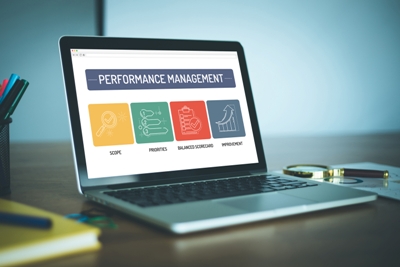To provide the best support to the business leaders, FP&A needs to quickly leverage the accounting...
 FP&A department has a unique place within the company – access to financial data enables it to get a full picture about the position the business is in, while the nature of its work allows FP&A to collaborate with different functions across the organisation.
FP&A department has a unique place within the company – access to financial data enables it to get a full picture about the position the business is in, while the nature of its work allows FP&A to collaborate with different functions across the organisation.
New technologies are reducing back-office workload, giving FP&A the opportunity to be more involved in running the business. Degree of this involvement depends on the capacity of FP&A team and the organisational culture.
In this article we focus on how to:
- Develop team capacity
- Use it in managing the company’s performance
Knowledge is power
There is no big secret – in order for FP&A professionals to give credible recommendations to senior management, it is required that they understand the company, industry and the latest trends associated with those. As knowledge depends on the access to the right information, FP&A leads should work with CFOs to secure that the team has optimal tools and systems. Still, it is a responsibility of each team member to keep up-to-date with how performance is evolving.
What business is the company in
Understanding the company and its operations is one of the building blocks for providing adequate support:
- What products/services does the organization offer
- Who are the key customers and consumers
- Who are the main competitors
- What is the business model and how the business flows
- How is the trade organized
- Who are the main suppliers and partners
- What are the key challenges for the operation
If a company is conducting business in different countries or has diversified activities, start by looking at the largest operation first.
How big is the company
Type of ownership and company size expressed in revenues, profits and cash flow often frame the way business is done. Besides, it is important to know:
- Size of the market (both in terms of volume and revenue)
- Current market share and which products/services are driving it
- Market share progression
- Significant changes in the previous 7-10 years (i.e. acquisitions, divestments, restructurings)
How is the industry doing
Industry landscape is defined by its players, economy and legislation. Industry practices have been setting a stage for companies and although the changes are happening faster nowadays, understanding the fundamentals of the industry remains important:
- Market and segment size
- Major companies
- Leading products/services
- Latest legislation
- Role of the government
- Threats and opportunities
Trends
Historical data provides a starting point to picture how the enterprise is doing. Identification of key business drivers and how they impacted the organization builds a reliable knowledge base for FP&A professionals. However, the future is not a simple reflection of past trends and practices. Economy is becoming uncertain, consumer preferences are evolving and new products are continuously launched. All of this results in a modified business environment. Monitoring market situation is essential for giving objective recommendations.
Last but not least
One final part to master before joining the table with decision-makers is to understand what goals, objectives and targets the enterprise has set. To help someone in reaching the destination, besides knowing weather conditions and how to read the map, it is crucial to know where he or she wants to arrive.
Putting knowledge in use
Through contemplating elements listed above, FP&A is usually identifying warning signals and opportunities for business growth. Paths to get management’s attention depend on the style they run the operations and the profile of the individual. Although the style and a way to convey a message to different members of the management team do vary, it is necessary to have a clear and solid business case:
- Findings (backed-up with valid data)
- Assessments – what-if scenarios
- Rational suggestions
Performance management
As performance management is looking into how a business to be successful in future, plans and targets are usually (among) key focus areas. Knowing the past and understanding the trends makes FP&A a credible partner in discussion about the feasibility of the plan. It is therefore good if FP&A is involved during the phase when plans are being built. People can be very sensitive when challenged, and to overcome the resistance it is helpful to keep the conversation factual.
For situations where plans had already been defined and the main objective is to secure that they materialize, FP&A should continuously track the progress. Having the chance to see a big picture gives the opportunity to identify safety measures:
- If sales are falling behind, which products could be pushed (i.e. temporary promotions, price assessment), which costs could potentially be reduced, which activities could be rescheduled?
- If sales of the current period are exceeding the target, is there a risk for (some of) the next periods or the overall market situation is more favourable?
- If there are significant one-time impacts, results should be assessed from the neutral perspective, excluding those non-standard events
- If business is done in different markets, are there opportunities to off-set lower volume in one country with the upsides in another?
- If spending is exceeding the budget, follow up with the budget owners and assess which costs are indeed necessary. Is there a link between increased spending and sales, and would there be a top-line upside?
- If spending is behind the schedule, is it just a temporary situation or at least part of the funds can be used for other activities or released to protect profitability?
Besides suggestions for tactical and operational measures, FP&A can contribute in the process of defining strategic responses – recognizing the trends enables giving rational proposals about the changes in price positioning, portfolio, business models.
FP&A team operates best when cooperating with other functions. Managing the relationship with colleagues from other departments is important as it secures the flow of vital information and protects the interests of the company. As much as possible FP&A should maintain its professional position, staying away from internal politics.
The article was first published in Unit 4 Prevero Blog
Subscribe to
FP&A Trends Digest

We will regularly update you on the latest trends and developments in FP&A. Take the opportunity to have articles written by finance thought leaders delivered directly to your inbox; watch compelling webinars; connect with like-minded professionals; and become a part of our global community.






